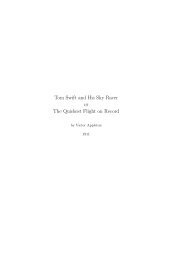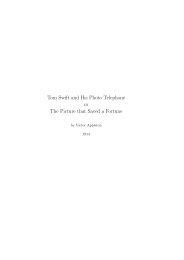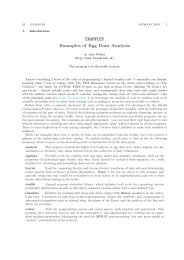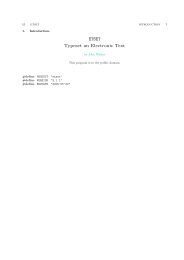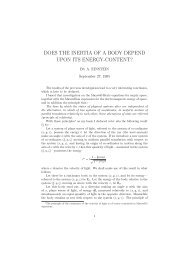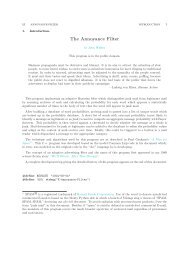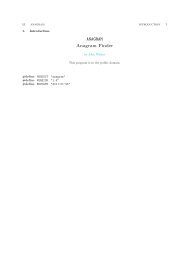You also want an ePaper? Increase the reach of your titles
YUMPU automatically turns print PDFs into web optimized ePapers that Google loves.
60 DESCRIPTIONS OF NUCLEAR EXPLOSIONSa shallow underground explosion ap- tamination over a large area, the extentpears as an air blast wave. The fraction of which depends upon the depth ofof the energy imparted to the air in the burst, the nature of the soil, and theform of blast depends primarily on the atmospheric conditions, as well as upondepth of burst for the given total energy the energy yield of the explosion. A dryyield. The greater the depth of burst, the sandy terrain would be particularly consmaller,in general, will be the propor- ducive to base surge formation in antion of shock energy that escapes into underground burst.the air. For a sufficiently deep explo- 2.97 Throwout crater formation ission, there is, of course, no blast wave. apparently always accompanied by abase surge. If gas acceleration occurs,BASE SURGE AND MAIN CLOUD however, a cloud consisting of particlesof various sizes and the hot gases2.96 When the fallback from a escaping from the explosion cavity genshallowunderground detonation de- erally also forms and rises to a height ofscends to the ground, it entrains air and thousands of feet. This is usually refinedust particles which are carried ferred to as the "main cloud," to disdownward.The dust-laden air upon tinguish it from the base surge cloud.reaching the ground moves outward as a The latter surrounds the base of the mainresult of its momentum and density, cloud and spreads out initially to athereby producing a base surge, similar greater distance. The main cloud andto that observed in shallow underwater base surge formed in the SEDAN testexplosions. The base surge of dirt par- (100 kilotons yield, depth of burial 635ticles moves outward from the center of feet in alluvium containing 7 percent ofthe explosion and is subsequently car- water) are shown in the photograph inried downwind. Eventually the particles Fig. 2.97, taken six minutes after thesettle out and produce radioactive con- explosion.Figure 2.97.Main cloud and base surge 6 minutes after the SEDAN underground burst.



